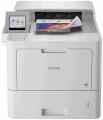Output type
The number of colours the printer produces when printing. To date, there are
monochrome(black and white) and
colour(providing full-colour printing) printers. The former are considered optimal for documents and other official materials that do not require colour; the latter allow you to create a full-fledged image, but such printing is much more expensive, so you should pay attention to them only if the colour format is critical.
Number of colors
The color palette that the printer can print.
A large number of colors is required for high-quality photo printing and obtaining color prints with many shades. The standard is
4 colors.
First page print time
The time from the receipt of a print command to the exit from the printer of the first page printed in black and white, in other words, how long after pressing the "Print" button, the user will receive the first page. Most often indicated for draft (fastest) print mode, higher quality will take longer. You should pay attention to this parameter if you often need to print small documents (on one or several pages) on the printer.
Mono print
The black and white print speed provided by the printer. It should be noted that this parameter is often indicated for low quality when the device is running at maximum performance; at a higher quality (even at standard), the actual speed can be noticeably lower, so you should choose with a certain margin. Also note that high speed significantly affects the price, power consumption and noise level. Therefore, it does not always make sense to chase maximum performance — for simple applications (for example, at home or in a small office), a relatively slow and inexpensive device may be the best choice.
As for specific values, speeds
up to 20 ppm are considered relatively low,
20 – 30 ppm — average,
31 – 40 ppm — decent, and the fastest models are capable of delivering
more than 40 pages per minute.
Colour print
Colour print speed provided by the printer. Usually, the specifications give speed at low quality, when performance is highest; on standard and especially high settings, the print speed can be noticeably lower, so it’s worth choosing with a certain margin. It is also worth considering that high speed significantly affects the price, power consumption and noise level. Therefore, it does not always make sense to chase maximum performance — for simple applications and small print volumes, a relatively slow and inexpensive device may be the best choice.
The "slowest" colour printers today are capable of delivering
less than 10 pages per minute. A more decent value is considered
10 – 20 ppm, a speed
of more than 20 ppm can already be called quite good, and in the fastest models this figure
exceeds 30 ppm.
Monthly resource
The maximum number of pages the printer can print in a month while still operating at full capacity.
Mono cartridge resource
The maximum number of pages that the printer's ink (toner) can print. The value is rather conditional, in reality the deviations from the norm are very large (up or down). In inkjet printers, the cartridge life is relatively small and amounts to several hundred prints. In laser and LED devices, the bill is already in the thousands.
Colour cartridge resource
The maximum number of pages that the printer's ink (toner) can print. The value is rather conditional, in reality the deviations from the norm are very large (up or down). In inkjet printers, the cartridge life is relatively small and amounts to several hundred prints. In laser and LED devices, the bill is already in the thousands.
OPC drum resource
The photoconductor is used in laser and LED printers (see Printing technology); during use, due to constant contact with paper, scratches and abrasions appear on it, which significantly affect print quality. In some printers, the photoconductor is part of the cartridge — in this case, its resource is equal to the resource of the cartridge, the drum is installed and changed along with it. In other models, the drum is installed separately.
The drum yield is the maximum number of pages that a printer with a drum unit can print without any noticeable loss in quality. It is usually specified for printers with a separate drum. The resource is a rather approximate value, because depends on the specific conditions of using the printer, and in fact it may differ from the claimed value both in one direction and in the other.

